Welcome to RennTech.org Community, Guest
There are many great features available to you once you register at RennTech.org
You are free to view posts here, but you must log in to reply to existing posts, or to start your own new topic. Like most online communities, there are costs involved to maintain a site like this - so we encourage our members to donate. All donations go to the costs operating and maintaining this site. We prefer that guests take part in our community and we offer a lot in return to those willing to join our corner of the Porsche world. This site is 99 percent member supported (less than 1 percent comes from advertising) - so please consider an annual donation to keep this site running.
Here are some of the features available - once you register at RennTech.org
- View Classified Ads
- DIY Tutorials
- Porsche TSB Listings (limited)
- VIN Decoder
- Special Offers
-
OBD II P-Codes - Paint Codes
- Registry
- Videos System
- View Reviews
- and get rid of this welcome message
It takes just a few minutes to register, and it's FREE
Contributing Members also get these additional benefits:
(you become a Contributing Member by donating money to the operation of this site)
- No ads - advertisements are removed
- Access the Contributors Only Forum
- Contributing Members Only Downloads
- Send attachments with PMs
- All image/file storage limits are substantially increased for all Contributing Members
- Option Codes Lookup
- VIN Option Lookups (limited)
-
Posts
37,335 -
Joined
-
Days Won
535
Content Type
Profiles
Events
Forums
External Paint Colors
Downloads
Tutorials
Links Directory
Collections
Store
Posts posted by Loren
-
-
There is only one bolt that hold the clamp aroung the tailpipe. I think it is 15 mm.
Loosen the clamp and take the old tailpipe off. Put the new tailpipe on and tighten just so that it can still be moved. Align it so that the top most part of the tail pipe is at least 22 mm from the bumper cover (vertically) and centered horizontally while sticking out 7 -10 mm beyond the bumper. (Don't blame me these are Porsche specs -- I generally line them up so they look the same on each side). Do the same with the other side. THEN you are ready to tighten them down -- if you tighten then down too soon then you will likely have to go back and move one or the other to get them aligned with each other. Probably a 15 -20 minute job.
-
-
The German across the back of the car(s) -- Erprobungsfahrzeug means: Test vehicle
-
Yes. Do NOT put the key in the ignition while you are removing the seat... as this can trigger the airbag warning light. Not the airbag itself but the warning light -- if that happens it must be cleared with a diagnostic tool (PST2 or OBD II). If you want to be extra safe then disconnect the battery.
-

Pull forward the control button (25) of the light switch (31) as far as it will go (direction of the arrow) towards the front. Press in the locking device at the lower side using a small screwdriver and remove the control button towards the front. Undo the fastening screws (21) at the side, remove the side vent towards the front. Disconnect the plug connection (30) of the main light switch.
You will need to remove the seat to hook up the reverse wire for the mirror. The reverse wire disables the self dimming when you put the car in reverse. The seat is not hard to remove as long as you have a Torx E12 (E is for external) socket. Sears as well as other tool places have these.
-
I think you should be okay. To be sure have someone else slowly jack the car up while you watch how the plastic deforms. If you see the plastic starting to bend too much then you may want to move the jack closer to the tire... and try again.
-
Are you talking about the aerokit bumper (996 505 980 00 G2X)? If so.... If you look closely at my pics the inside of the plug had some black silicone like sealer. I cut the edge of this enough to peel it back and strip it out. Then the plug just pops out.
If you have a standard bumper you need to buy a whole new inside insert.
-
-
Porsche does not sell the buckle only (my guess would be safety/liability reasons). Since you only need the buckle, a wrecking yard or perhaps someone that has change their belts out would be a good bet. Any buckle from a 996, TT, or Boxster should work fine.
-
Antonio,
Those are the correct color codes (green/red) for a MY02 or newer Cab with 6 speed rear springs. (p/n 996 333 531 27).
The yellow (or orange) is the spring plate tolerance code.
-
That one is pretty easy...

-
1. The spoiler harness part number and detail is in the Tech Tips Section
2. The center console removal is different for MY02 and newer cars. I will need to know your model year. Also, how much are you replacing? just the outside surrounds or the vent and defroster covers too?
-
Antonio,
If your car is a MY02 or newer you can retro-fit the X74 suspension. Jonathan(Unitah here) has done this. He can give you all the details.
-
Carlos,
Welcome! :cheers:
Again, tire pressures are (IMHO) very much dependent on how you drive. I grew up with the tail happy (oversteer) Porsches of the 70's so I tend to want a certain amount of throttle oversteer in my 911 (996). I have found that with the 996 though it is not the same... If the rear tire pressures are too high the back end seems to break loose too much (more than I like)... so throttle steering becomes more of a "regain control " condition. So I have tried to balance the cars understeer and oversteer to a level where I feel like I can push the car knowing what is going to happen. My personal experience was that if the front to rear ratio gets to large (or small for that matter) the car becomes less "predictable".
Again, this just maybe my driving style and your mileage may vary... So, that's why I tell folks to balance the car to their liking (not mine) and just make sure you are not breaking any fundamental laws of physics (i.e. tire pressures under 30 psi, ratios too high or too low).
-
Well, according to the parts list the GT2 does get a different rear bulkhead panel. Are the recepticals there? I don't know. It shouldn't be too hard to carefully lift the carpet or remove the rear DME cover to peek in or remove the belt rose to see if the mount points are there. Without the rear seats, I wonder what the effective safety would be?
Might I ask why you want rear seat belts in a car with no rear seats?
-
Here you go Mike...
Pins 2 and 3 (on drivers lock) are the airbag.

-
Jon,
I sent you an email...
-
Mike,
I think what you want is the seatbelt light out... but the airbag function still active -- right?
-
RJ,
I think both Orient Express's post and Mike in CA posts cover most of it. I would add the following;
1. The jack pad Mike suggests is great for non-aerokit cars but will not work on aerokit cars (it is too wide and will crack the flair). There is a smaller one that uses less surface area that works better on aerokit cars (in case you are thinking of adding the side skirts).
2. I don't think it is a good idea to lift the car by the engine -- too much stress on the engine mounts. Use the jack points or the hardened area just to inside (center of the car) of the jack points.
3. Buy good jack stands that can carry the weight and have locking pins... it's your car... and your life! ;)
-
Yes the plastic outside pieces are the same. If there is a PCM present the the mounting rack (52) is different.

-
Thanks!
Changing from a mid-engined car to a rear engine car is a bit different. The Boxster (like the 914 before it) are great handling cars and... because of their great balance very forgiving to drive. Now, your new Carrera is a little tougher since it has a weight bias over the rear wheels. To compensate for the weight bias Porsche has fitted the Carrera with a tire/wheel combination that promotes understeer -- mainly for safety. Tire pressure changes on a Carrera will have a greater affect on how the car handles and feels than it did on the Boxster. I believe that tire pressures need to be dependent on your driving style. So, there is not a tire pressure that works for everyone. The factory says front 36 and rear 44. I found that to not be the optimum pressure for my driving (I drive pretty hard and aggressive). I found the car too loose at those high pressures. After I experimented with lowering the pressures I have settled on 32 front and 36 rear (cold). Again, your pressures may vary but I would try to keep a 4 psi difference between the front-rear to keep the car in balance. I would not go much below these pressures and certainly not below 30.
I guess the bottom line is try a few different pressures and record you results (an autocross or closed track session is good for this) and then settle on the pressure that you feel most comfortable with (and gives the fastest times!).
-
I am not sure about your question... If you mean the plastic pieces that surround the radio, climate controls, PCM, etc. then yes. The top plastic piece is one part and each of the two side pieces can be changed.

-
Here is a pic of what Mike is talking about... it is actually the DME cover.
I think I would just go to a carpet store and find the closest match.
Will you be taking the bar out between events?

-
Thanks!
More questions for you...
1. Do you want all 4 off the ground at the same time (like for brake bleeding, etc.)? Or, are you just changing tires?
2. Do you have aerokit flairs on your rockers (it makes a difference)?

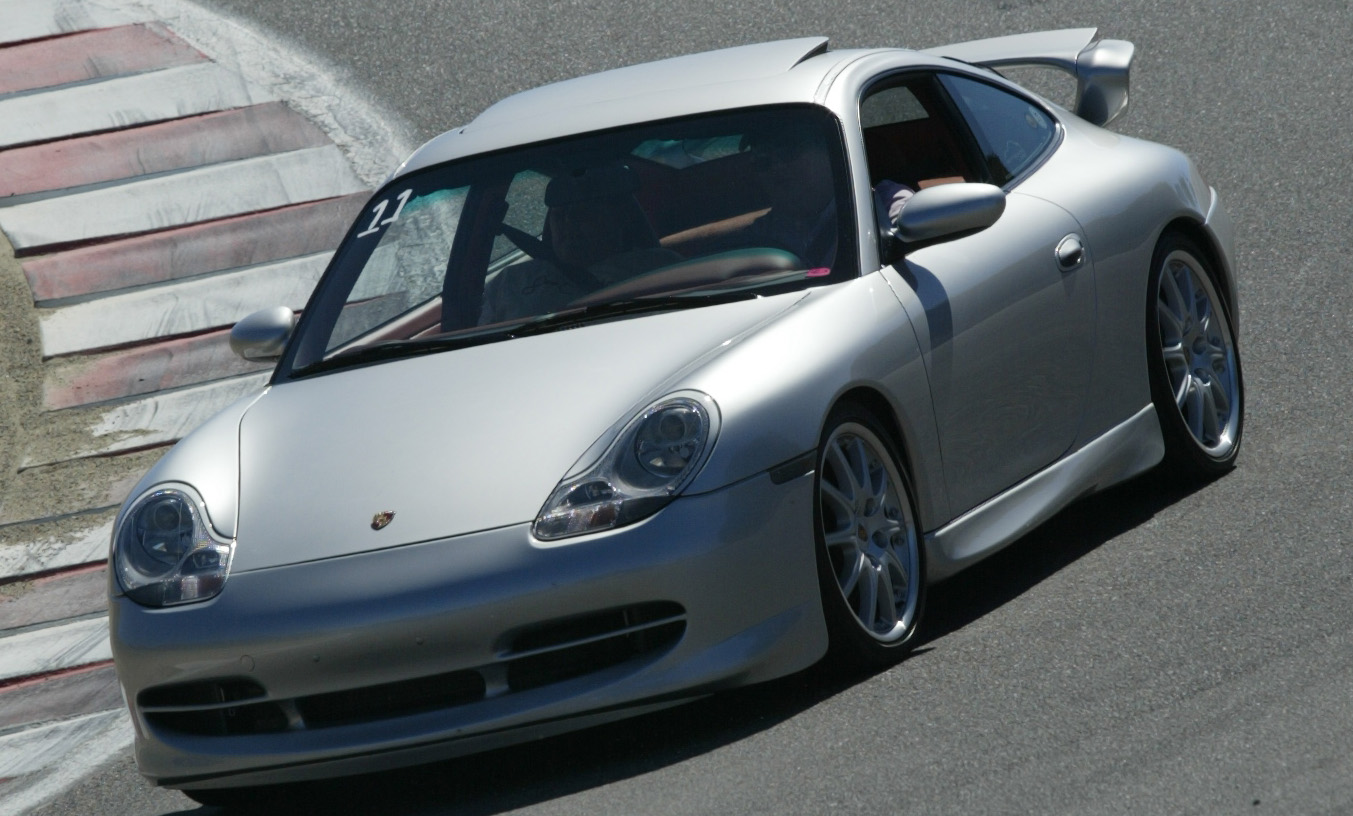
-0001-0001.thumb.png.17f5bb25bf8ec261a17c21e6321c8492.png)
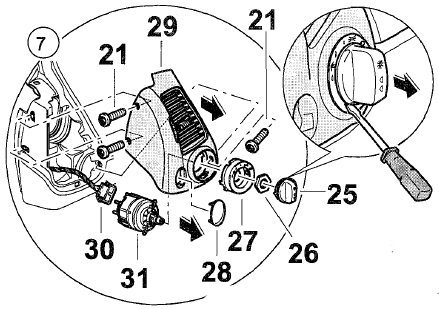



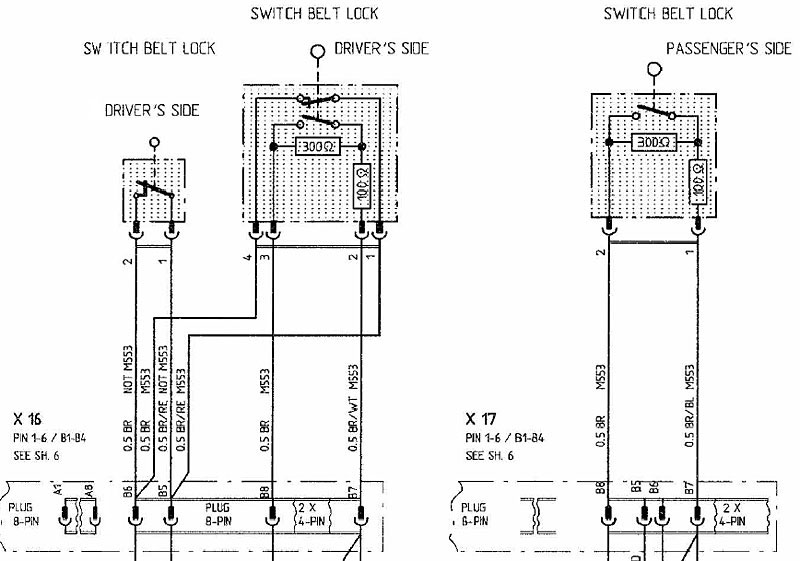

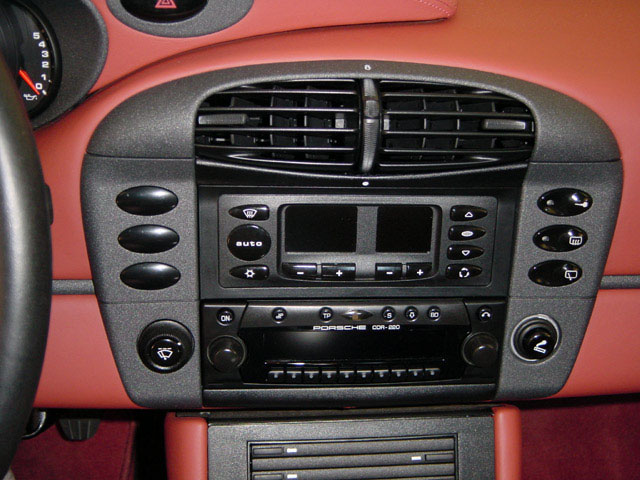
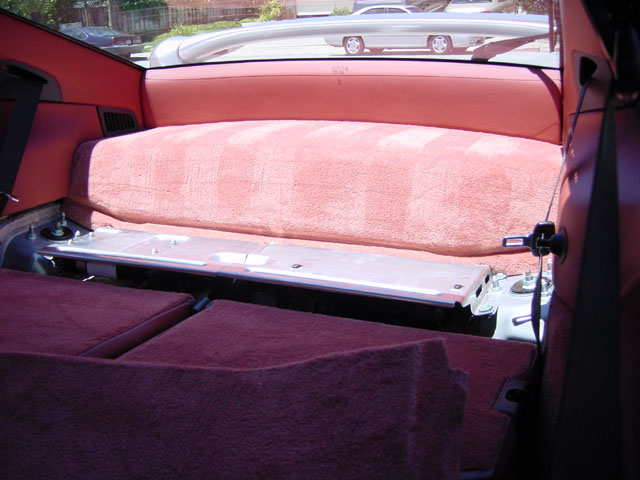
How to raise the Cab top while moving
in 996 Series (Carrera, Carrera 4, Carrera 4S, Targa)
Posted
The parking brake wire (like the speed wire) go to the convertible top control unit (computer).
But I think Jeff (Tool Pants) makes a good point -- perhaps just bringing this wire to ground (only during operation) will fool the controller.
The correct color code for the handbrake wire (MY00 only) is Brown/Yellow